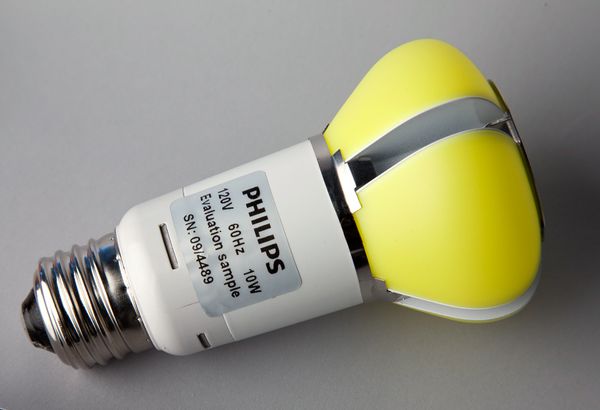The following is a media release by the Department of Energy’s Office of Public Affairs, dated August 3, 2011:
The U.S. Department of Energy today announced that Philips Lighting North America has won the 60-watt replacement bulb category of the Bright Tomorrow Lighting Prize (L Prize) competition. The Department of Energy’s L Prize challenged the lighting industry to develop high performance, energy-saving replacements for conventional light bulbs that will save American consumers and businesses money.
Submitted in 2009, the Philips LED bulb successfully completed 18 months of intensive field, lab, and product testing to meet the rigorous requirements of the L Prize competition – ensuring that performance, quality, lifetime, cost, and availability meet expectations for widespread adoption and mass manufacturing. If every 60-watt incandescent bulb in the U.S. was replaced with the 10-watt L Prize winner, the nation would save about 35 terawatt-hours of electricity or $3.9 billion in one year and avoid 20 million metric tons of carbon emissions.
“The L Prize challenges the best and brightest minds in the U.S. lighting industry to make the technological leaps forward that can greatly reduce the money we spend to light our homes and businesses each year,” said Energy Secretary Steven Chu. “Not only does the L Prize challenge innovative companies like Philips to make LED technology even more energy efficient, it also spurs the lighting industry to make LEDs affordable for American families.” “We looked at the L Prize challenge as an opportunity to innovate and develop an energy efficient alternative to a product that has remained largely unchanged for over a century,” said Zia Eftekhar, CEO of Philips Lighting North America. “The fact that we are the first and only company capable of submitting a product and completing 18 months of rigorous testing not only underscores our commitment to innovation and quality, it highlights our ability to bring meaningful leading technologies into the mainstream.”
Launched in 2008, the Energy Department’s L Prize competition targets the 60-watt bulb because it is one of the most widely used types of light bulbs by consumers, representing roughly half of the domestic incandescent light bulb market. Innovations in residential and commercial lighting products such as those encouraged by the L Prize expand the lighting choices available to consumers and support the Department’s efforts to reduce our Nation’s energy use, create manufacturing jobs for U.S. workers, and save money for American families and business owners (source).



